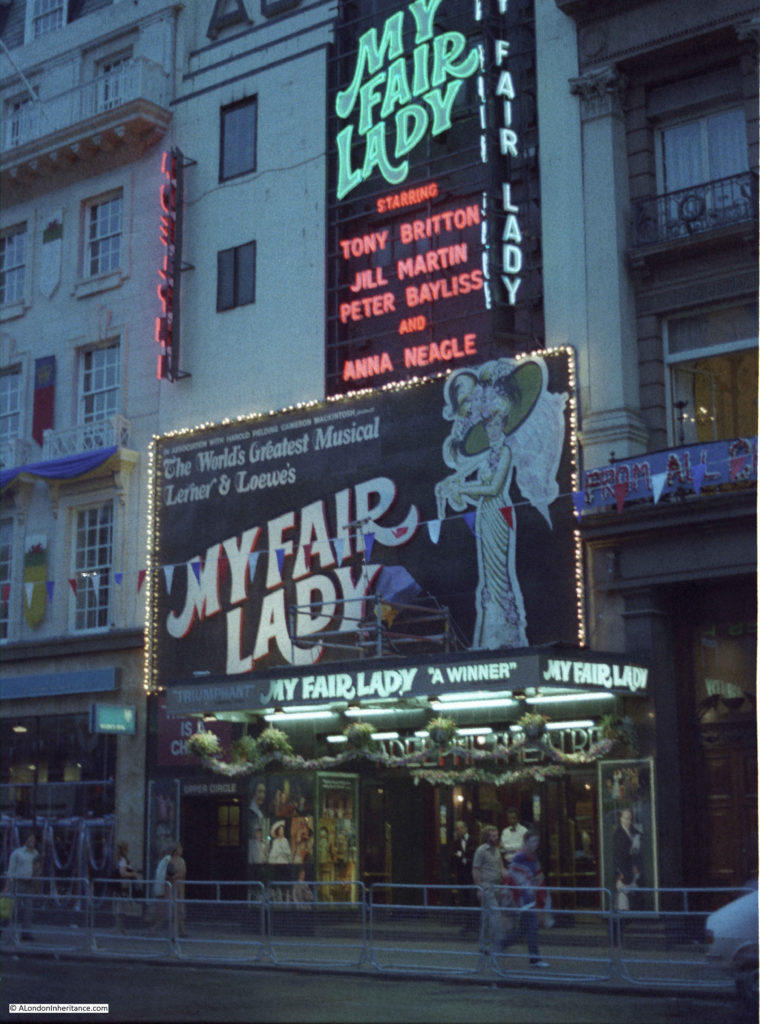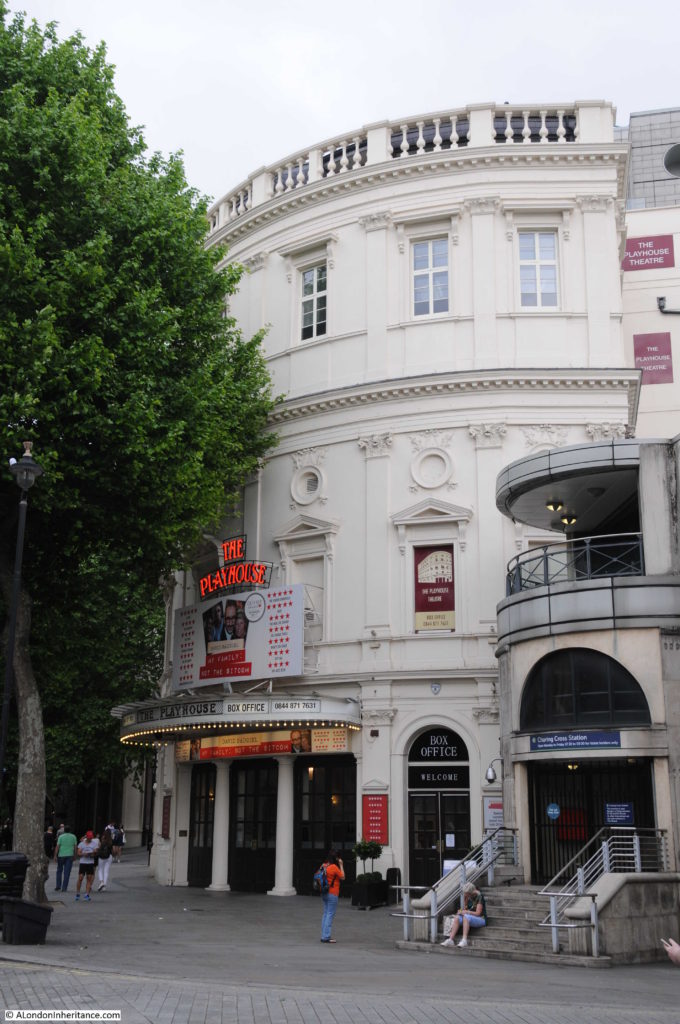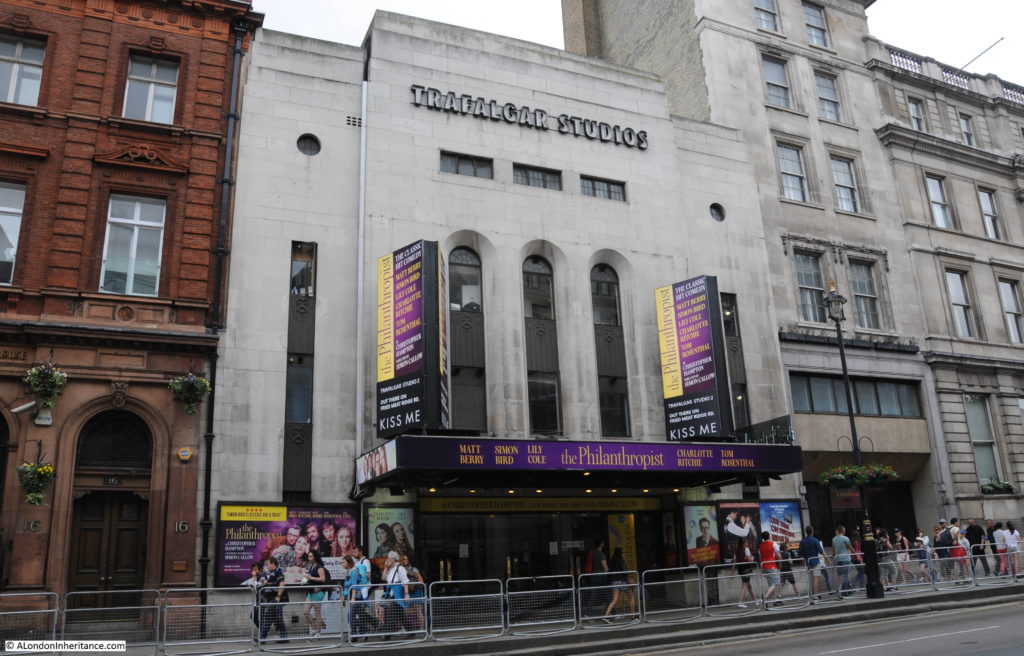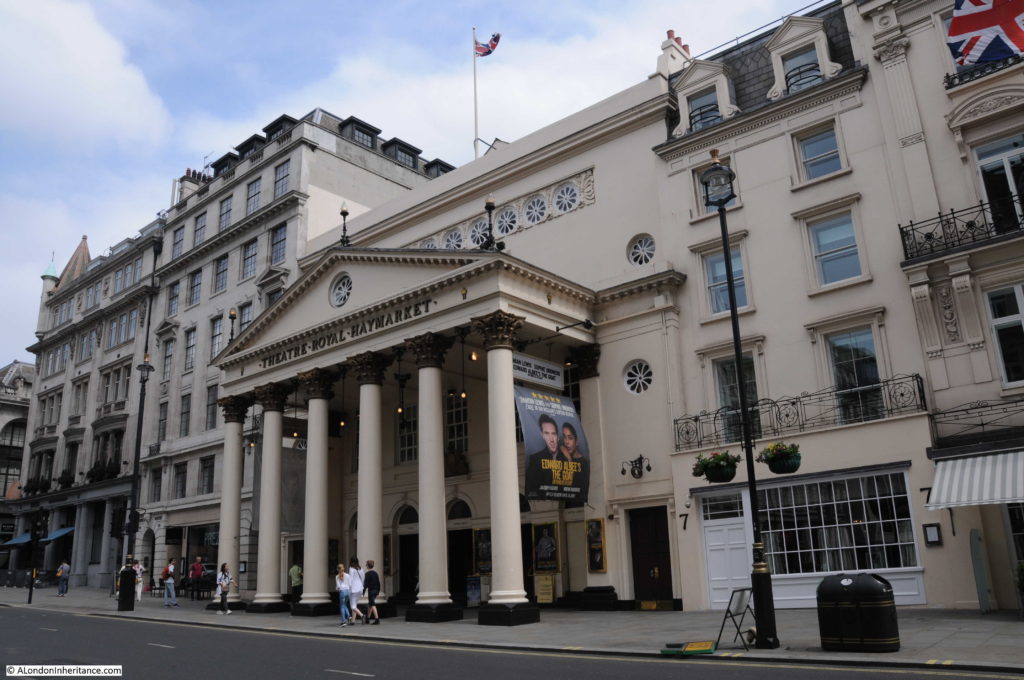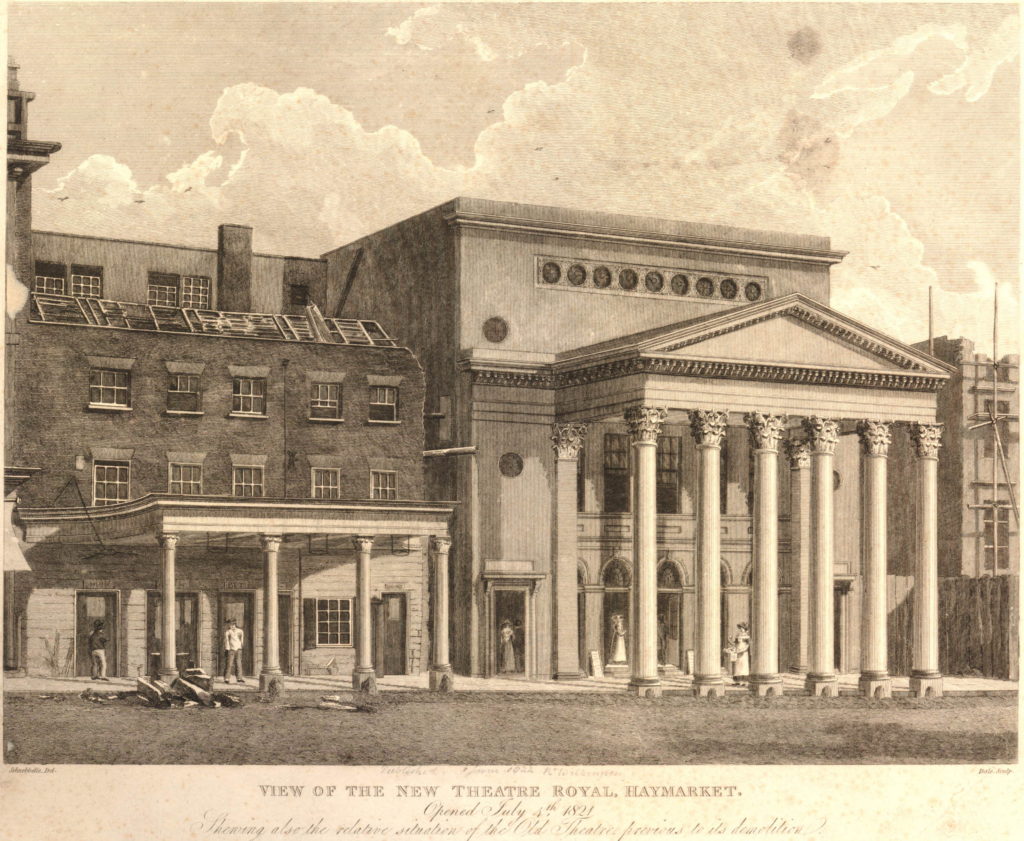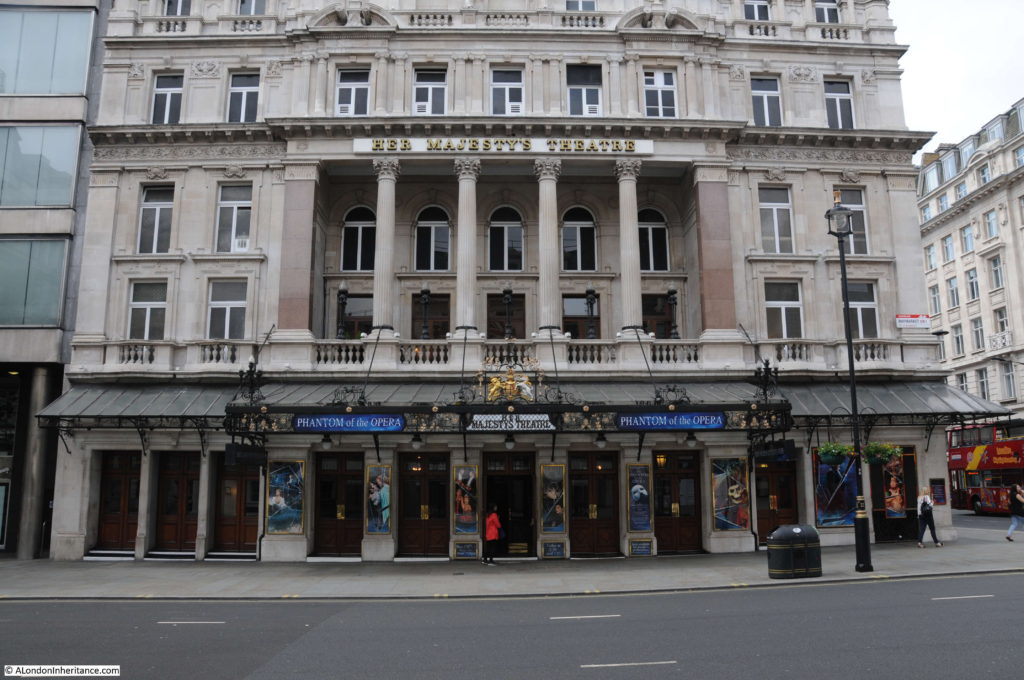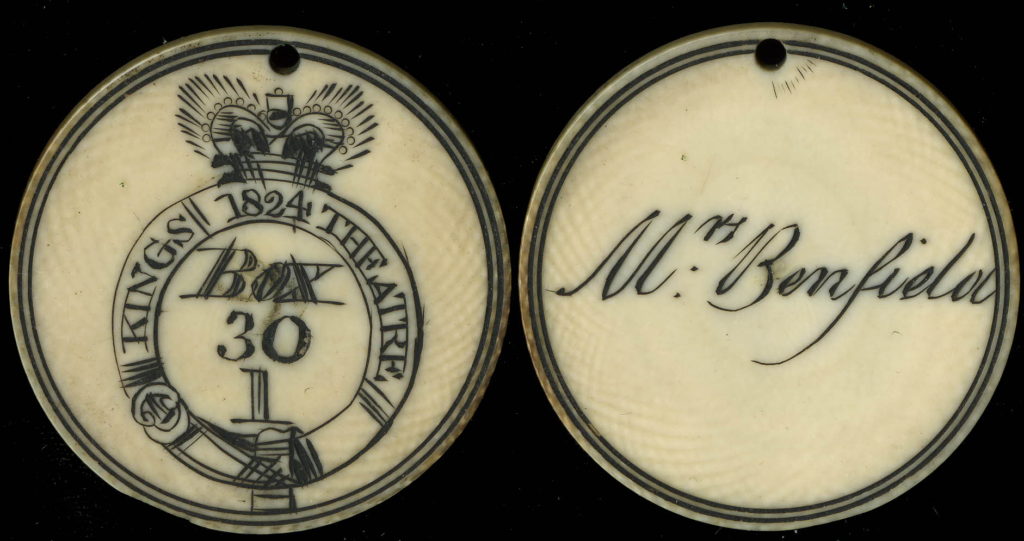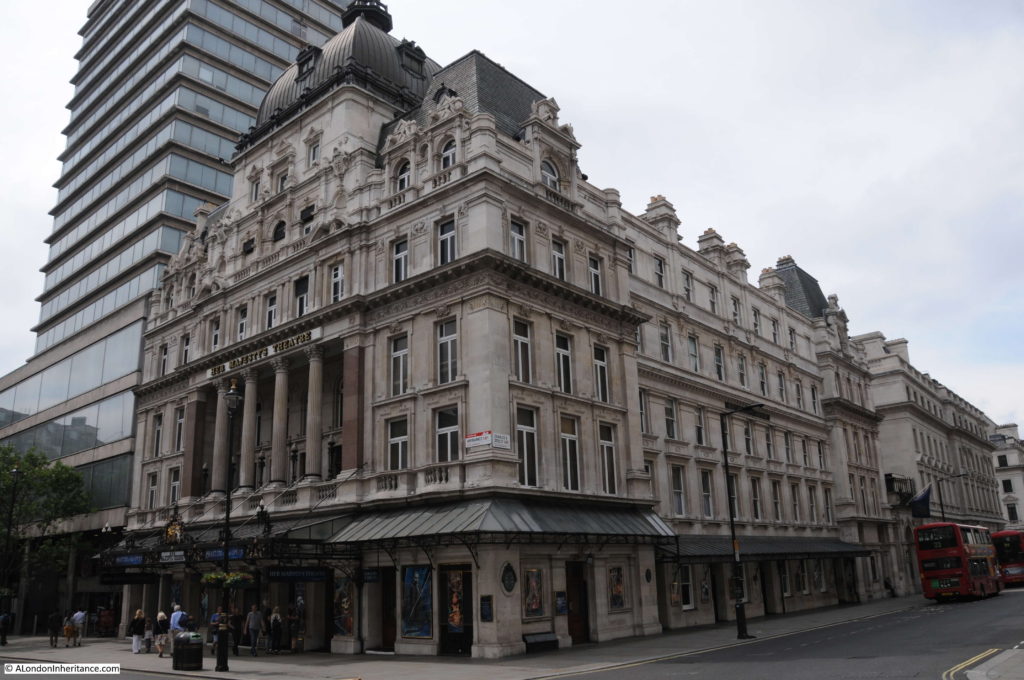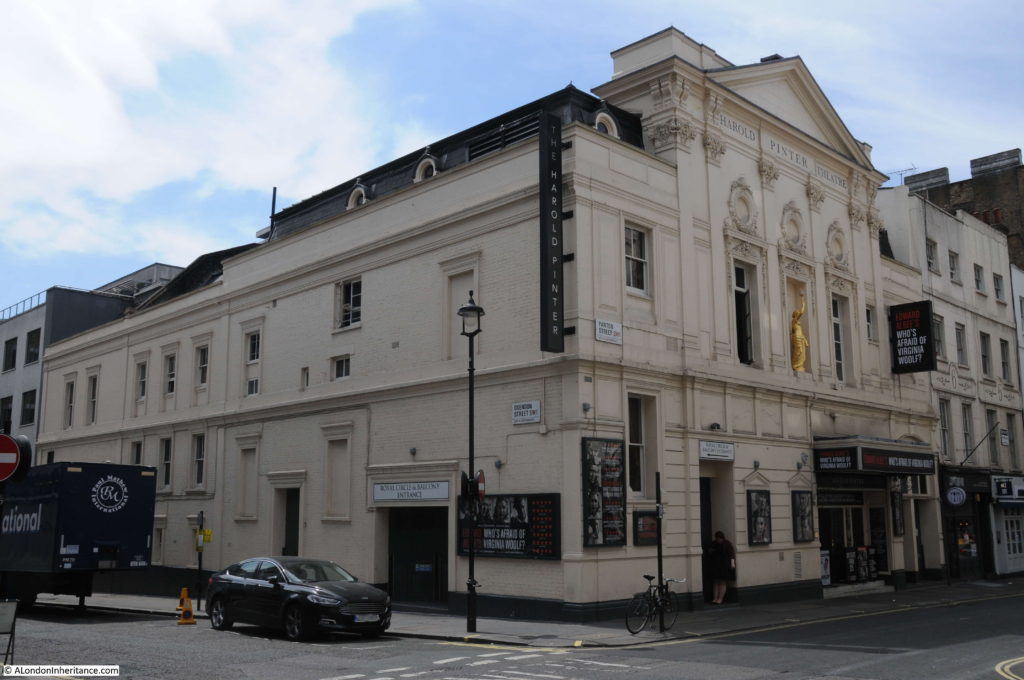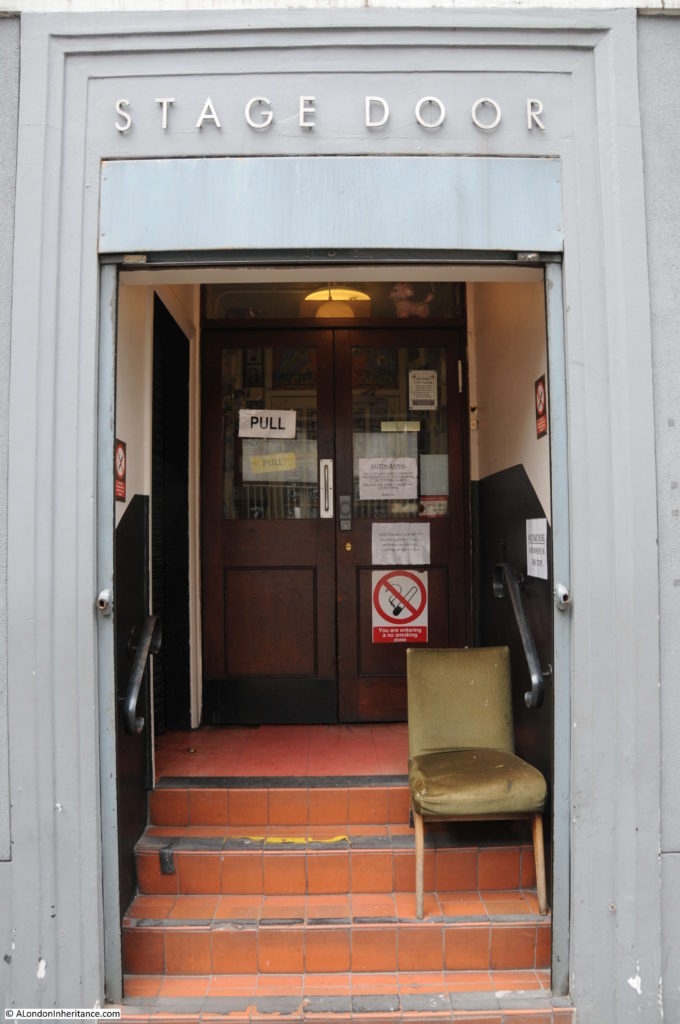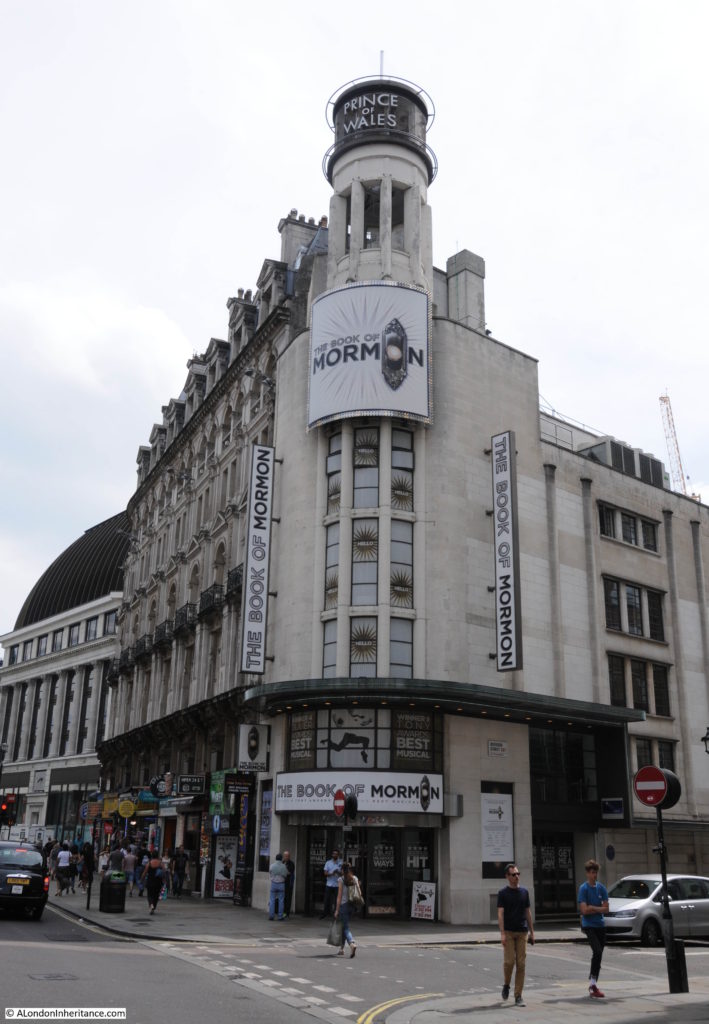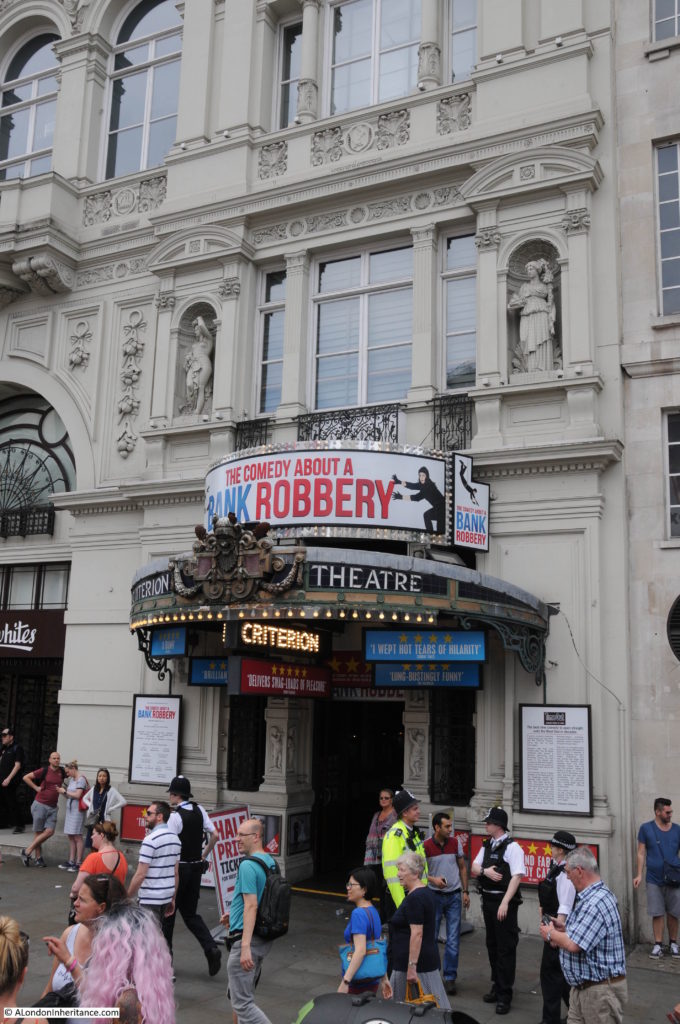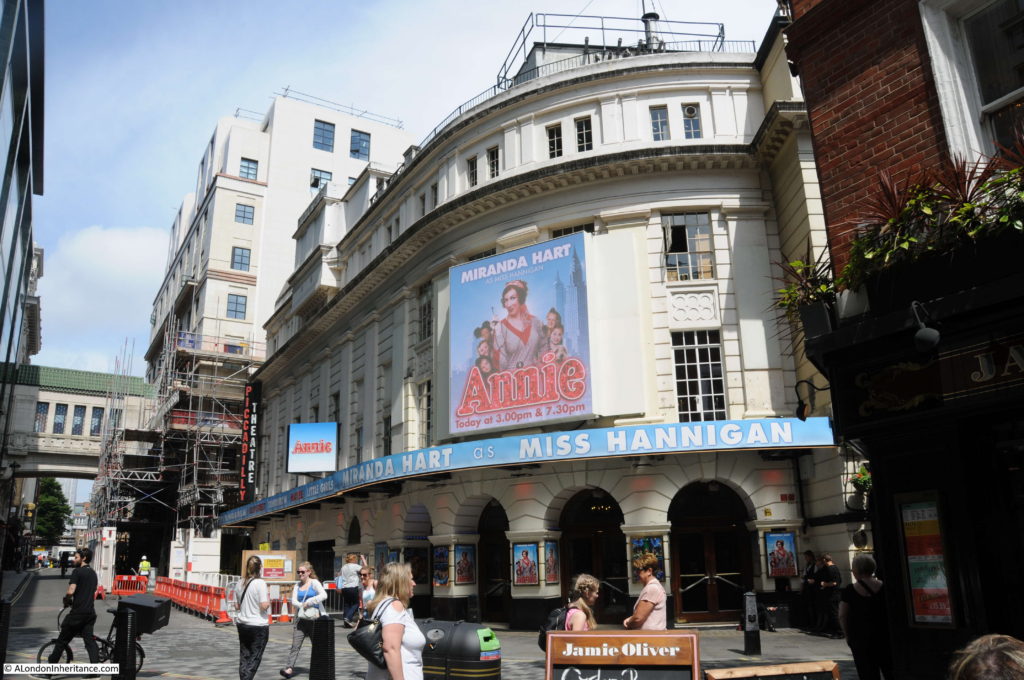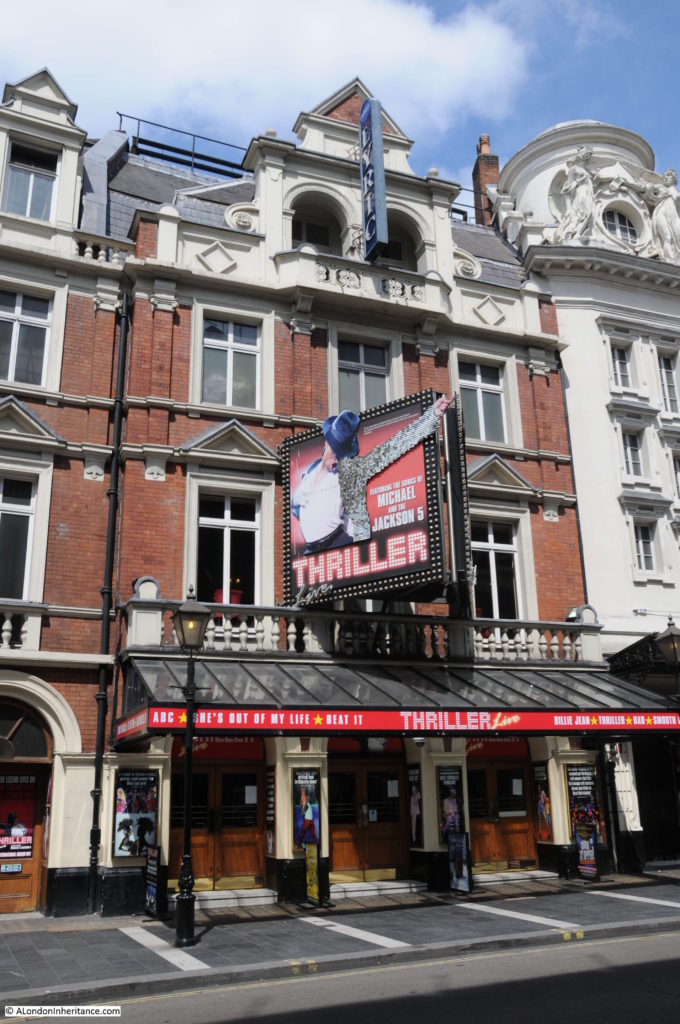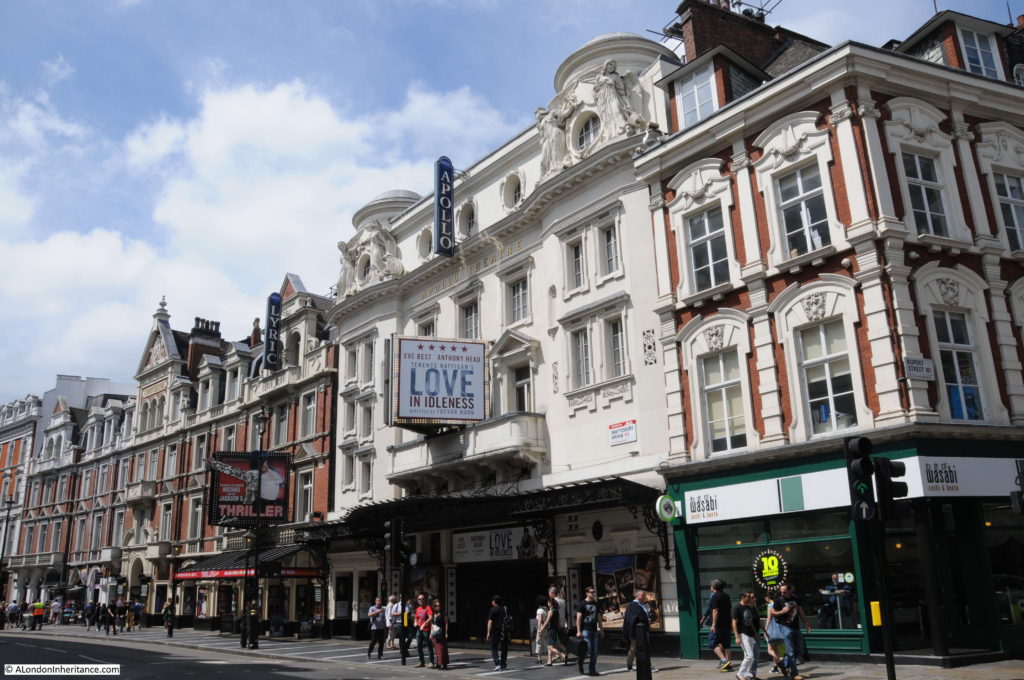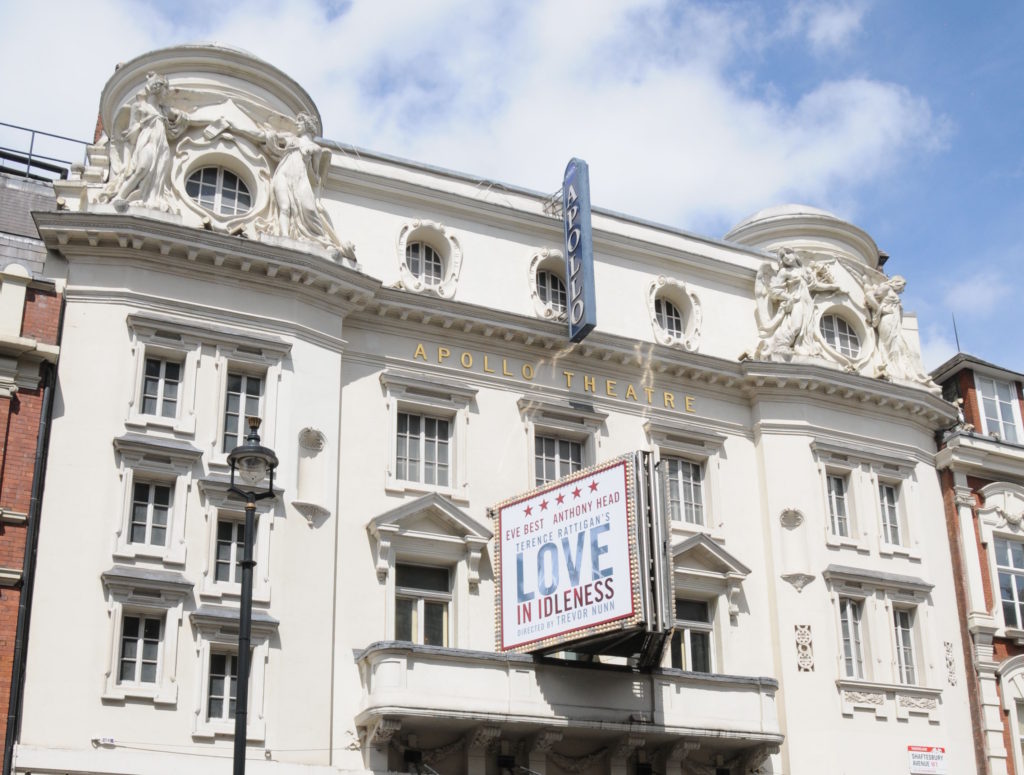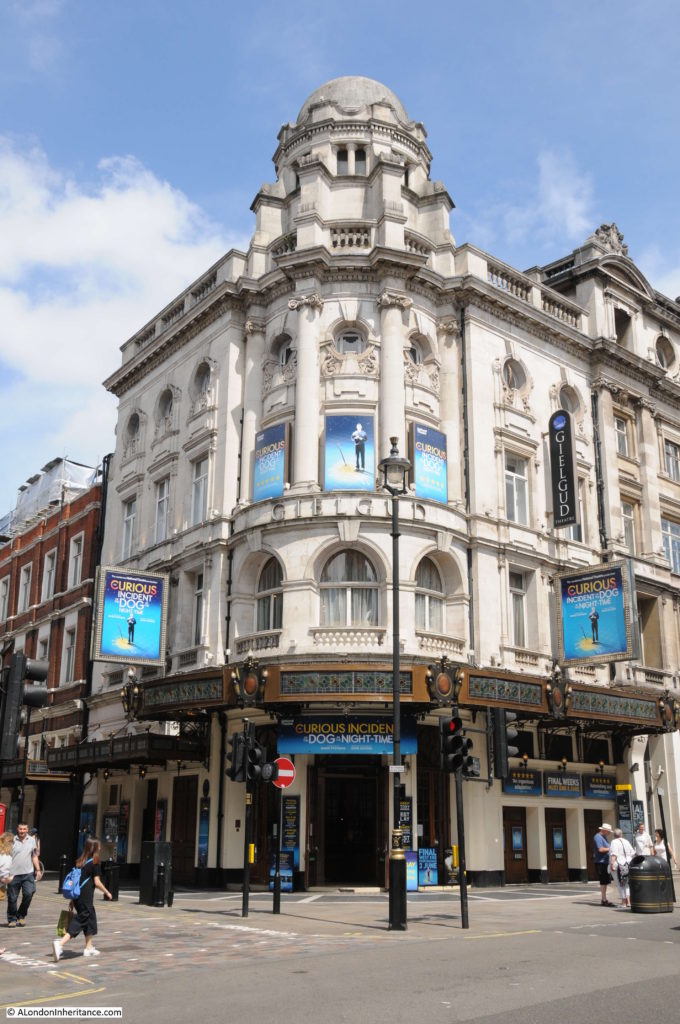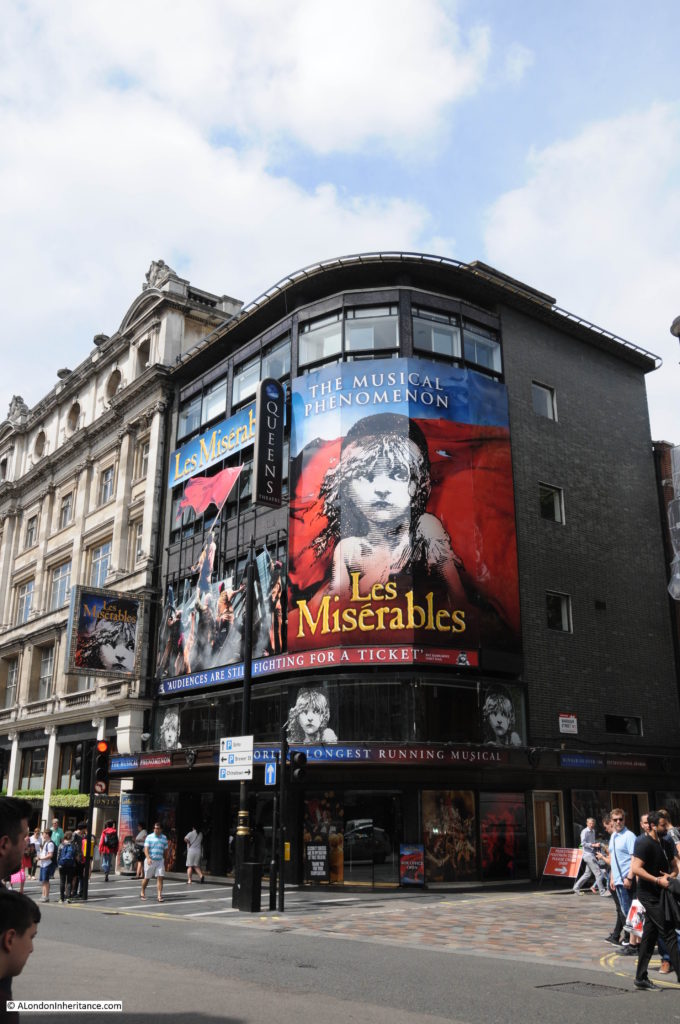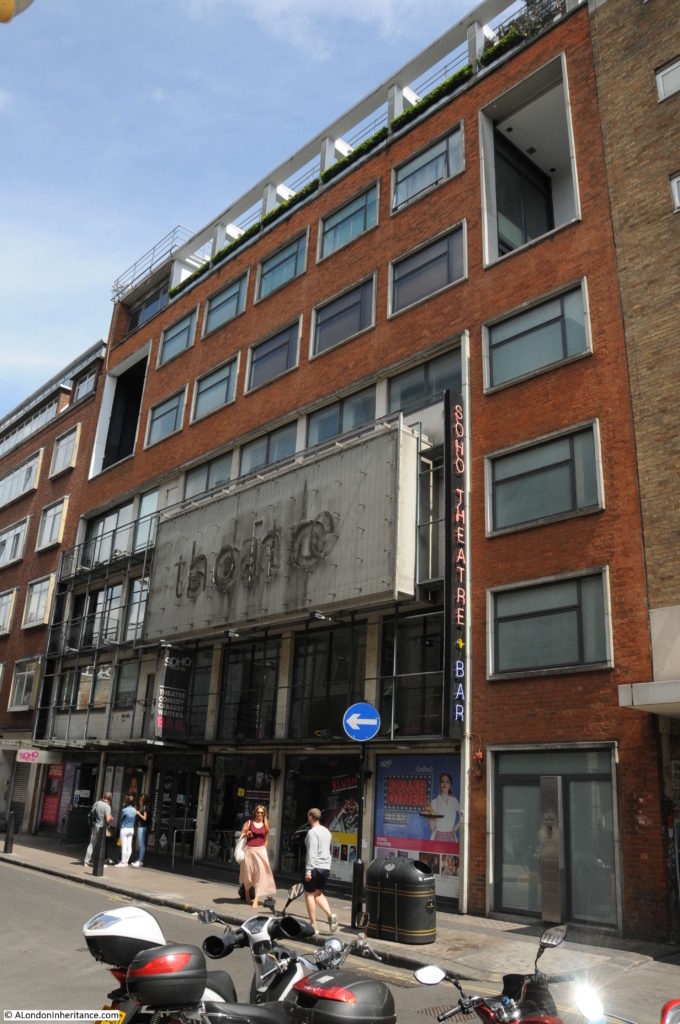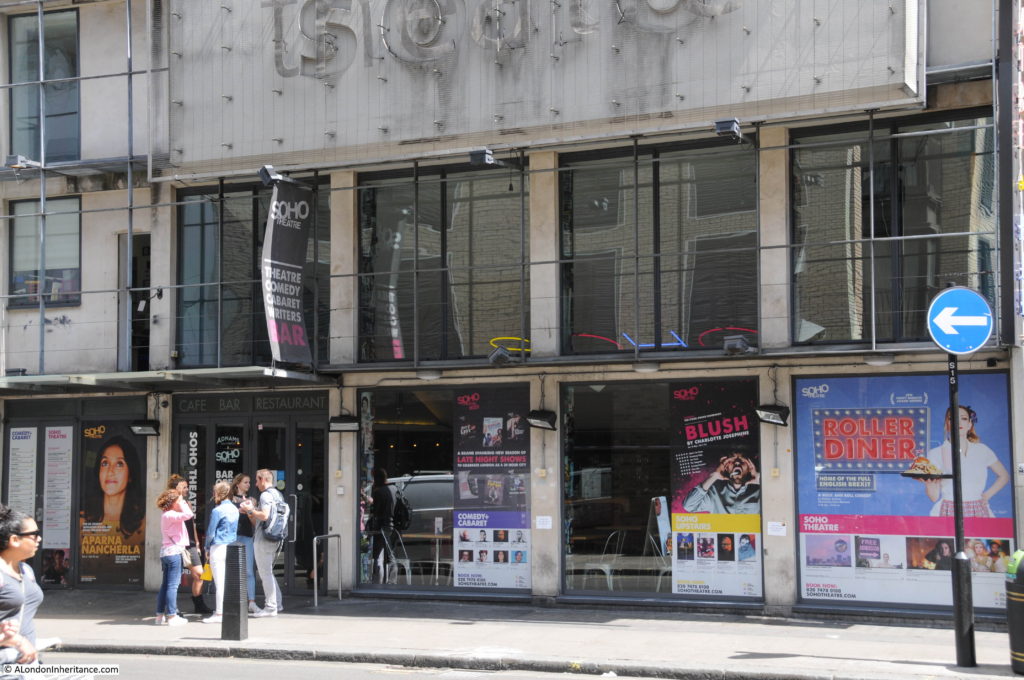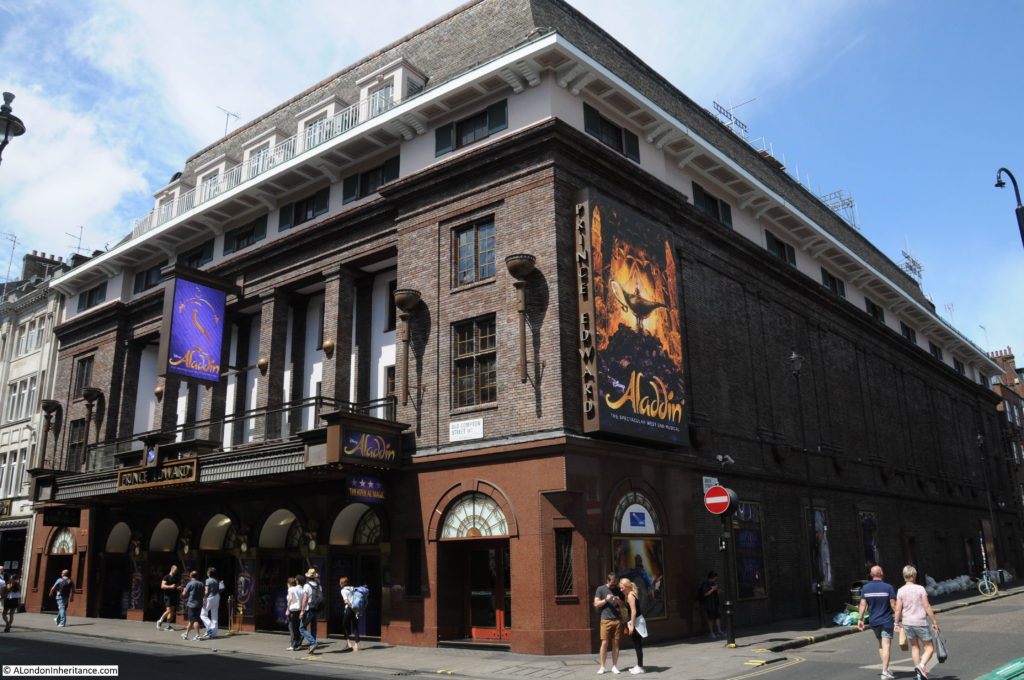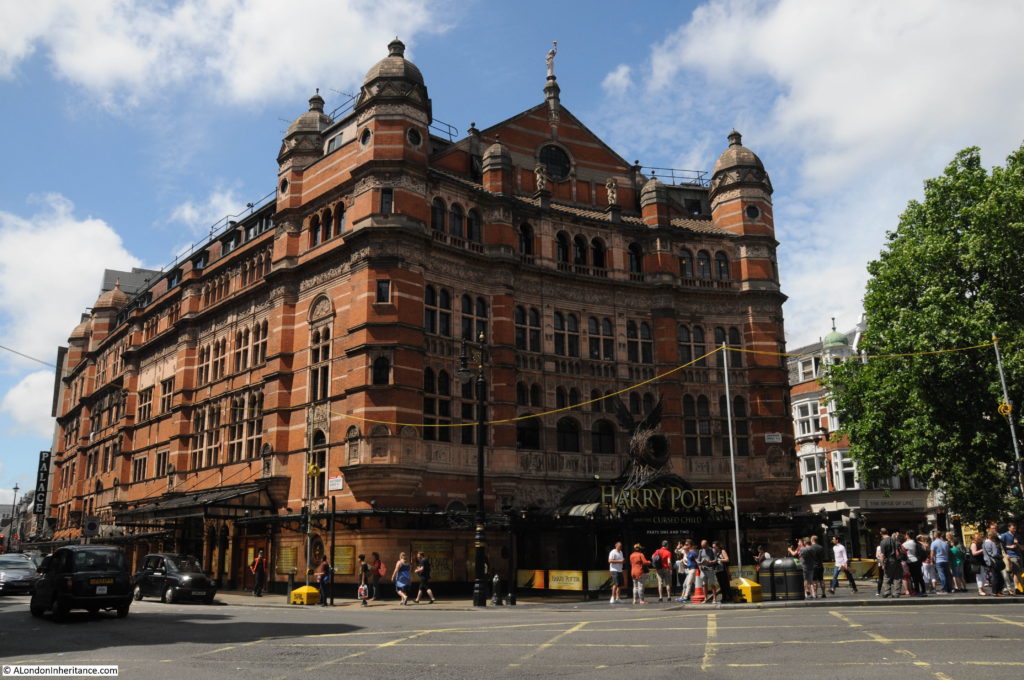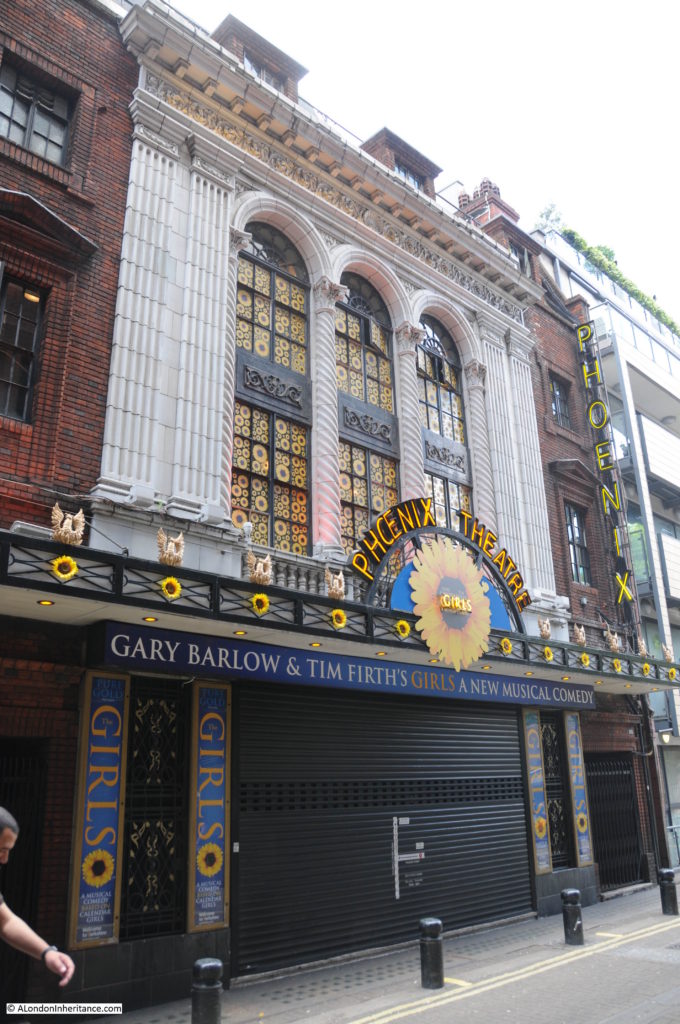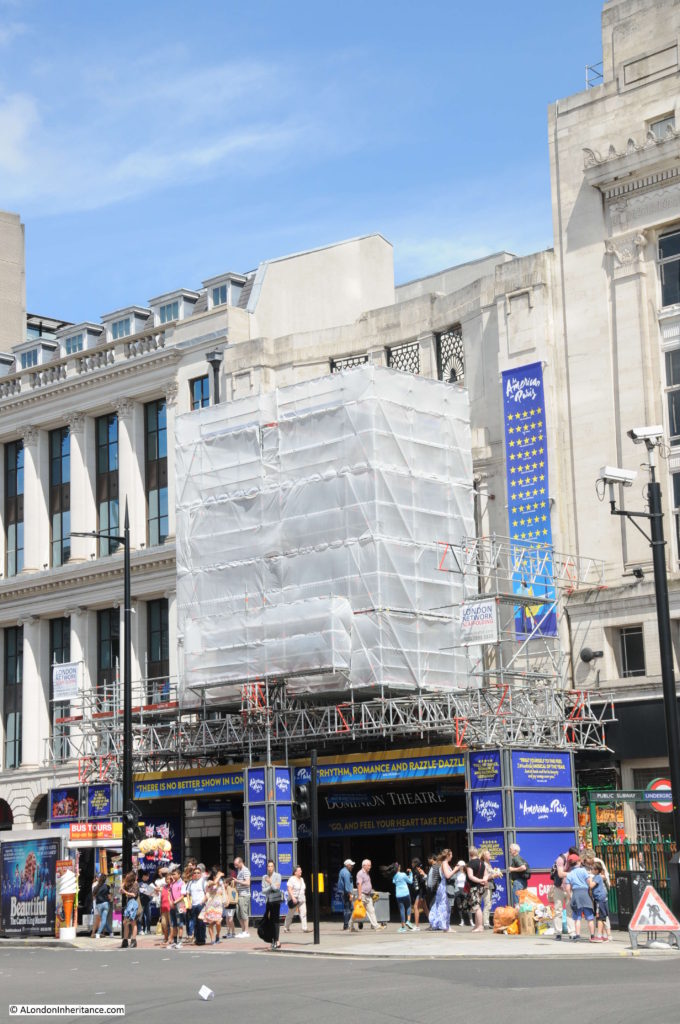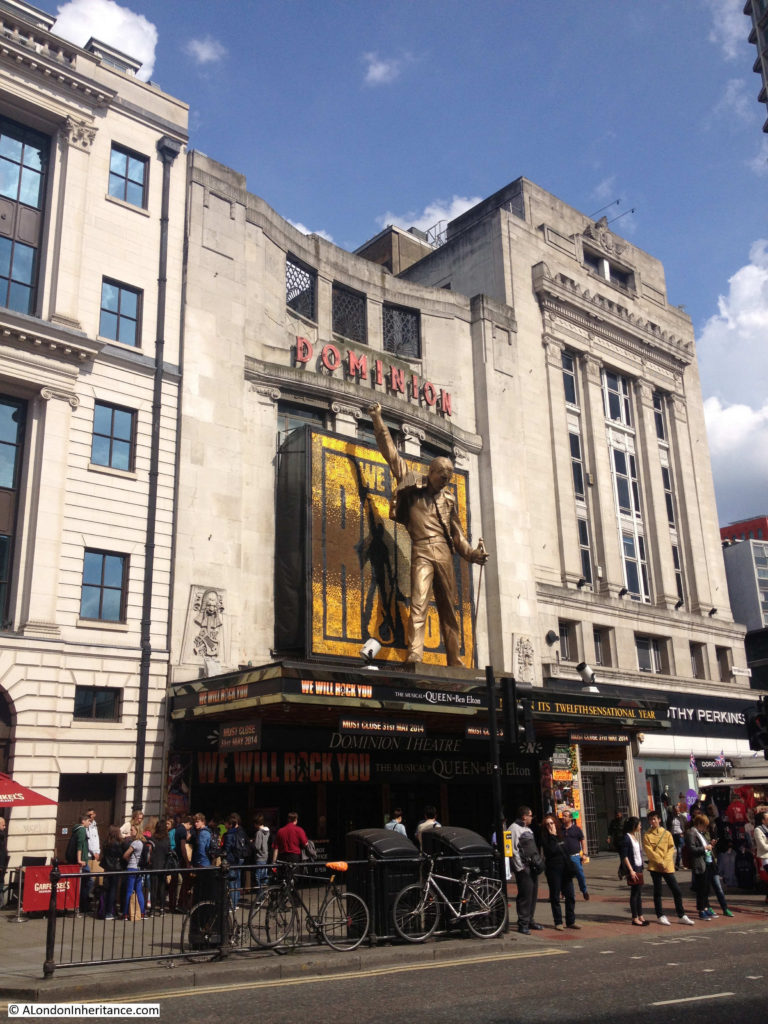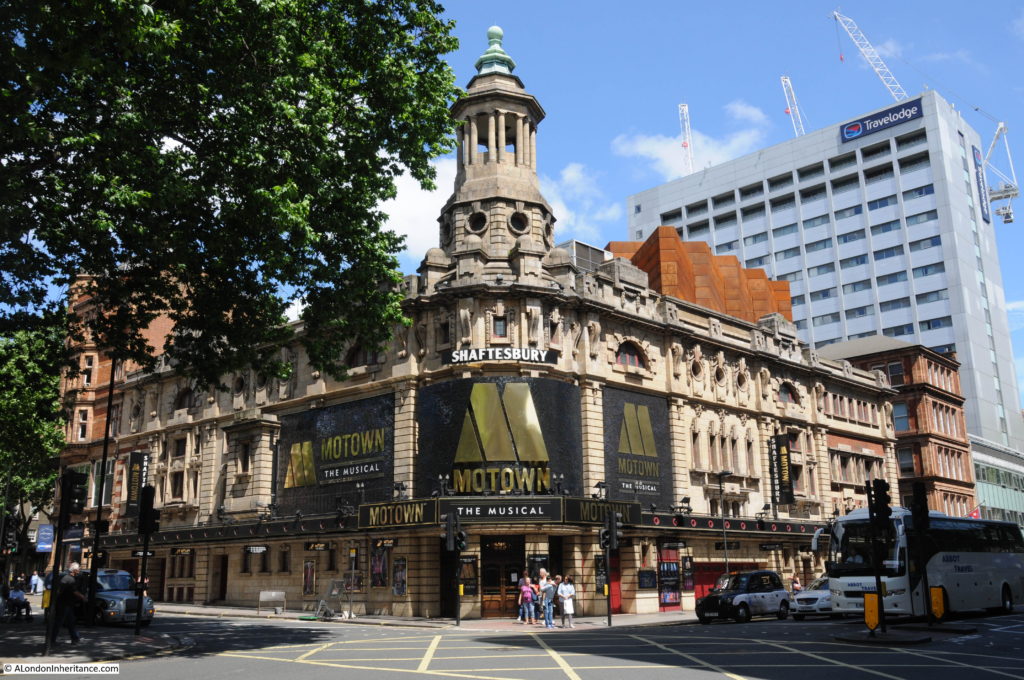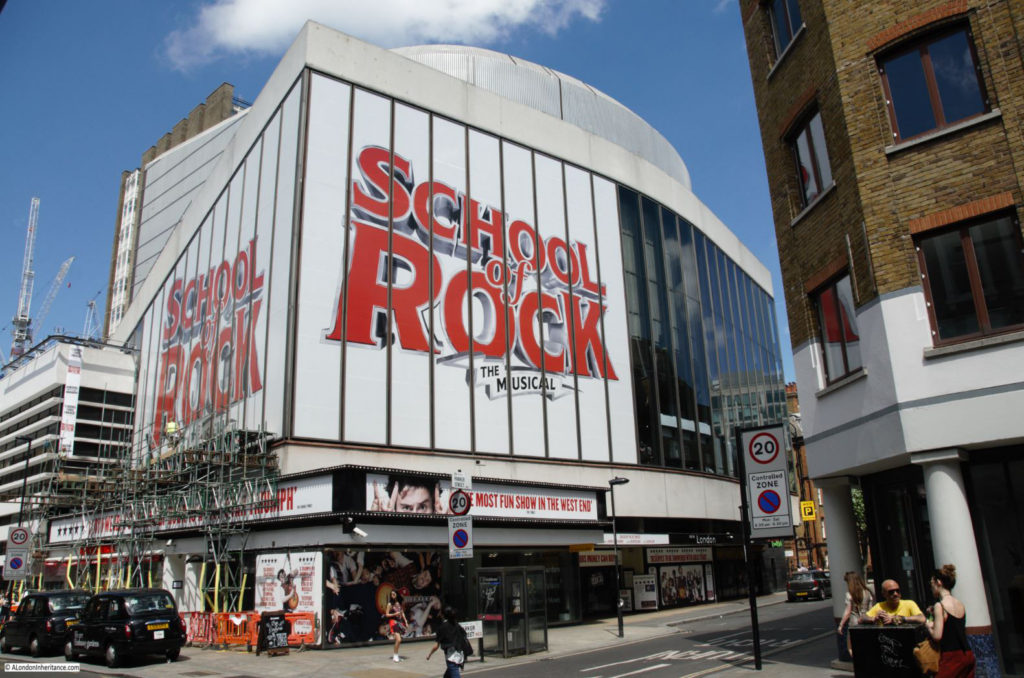West End Theatres, the subject of this week’s post, has come about for a number of reasons. Firstly whilst I love a random walk around London, I also like walking to find specific places or to follow a particular theme. Secondly, working with my father’s photos I often find myself wishing that he had taken more photos of other subjects and locations to those in his collection, it would have been interesting to see photos of so much else in the London of the time..
This week’s subject was also prompted when I scanned the following photo from 1981 from my own negatives showing the Adelphi Theatre in the Strand.
The West End of London has a large concentration of theatres. These have changed function over time, some have ceased to be theatres, some have spent periods of time as a cinema and occasionally new theatres have opened.
Theatres are also a snapshot of their time. The shows put on, the actors. the external advertising are all of their time. When I looked at the above photo appearing on the screen during scanning I recognised the names, but three of the four have since died and the theatres of the West End have since been populated by generations of new actors.
I therefore thought that an interesting theme for a walk would be to hunt down and photograph all the theatres of the West End and photograph them to provide a snapshot of West End theatres and their productions on a single day. This would have been an interesting series of photos I would have loved my father to have taken in the late 1940s and 1950s.
So last Saturday I worked out a route around the West End to try and hunt down as many theatres as I could find. I bounded the West End by the area enclosed by Oxford Circus, the southern end of Tottenham Court Road, Aldwych and Trafalgar Square – I hope this is a reasonable area to consider as the traditional West End Theatre Land.
There are many theatres to cover, so this will be in two posts, the first today and the second later in the week. There is only a brief history of each theatre, a single day’s view of the theatre and the production on the day was my main aim.
I have put together the following interactive map showing the theatre locations. In today’s post this has the first set of theatres covered and in the second post will have the complete set (for those receiving this post via e-mail, the map will appear as a picture, the interactive map can be found on the website).
Error: The map ID (2) does not exist
So on Saturday 27th May 2017, I set out to find all the West End Theatres. I started at one of the edges of my boundary of West End Theatre land, on the Embankment looking at the:
Playhouse Theatre
The Playhouse Theatre is on Northumberland Avenue, almost at the junction with the Embankment. The current building dates from 1905 which was a rebuild of an earlier theatre from 1882 called the Royal Avenue Theatre.
From 1951 to 1976 the Playhouse Theatre was run by the BBC as a live performance location. After 1976 the theatre fell into disrepair. I cannot remember the year, but in the early 1980s when I was working on the opposite side of the river there was a significant fire in the building.
In 1986 the derelict theatre was the location for Queen’s video for A Kind Of Magic. It was restored in 1987 to form the building we see today
Today the Playhouse Theatre is showing My Family: Not the Sitcom by David Baddiel.
Trafalgar Studios
From the Playhouse Theatre, I walked up Northumberland Avenue to Trafalgar Square and a short distance along Whitehall is the Trafalgar Studios.
This theatre was originally the Whitehall Theatre and opened in 1930. The Whitehall Theatre presented plays, revues and farces until the mid 1970s when it was then closed until 1986. From 1997 it was used for TV and radio productions for a couple of years. The theatre was refurbished and reopened in 2004 with the new name of Trafalgar Studios.
Externally, the building looks rather plan, however internally the building retains many superb art deco features from its original design.
Today the Trafalgar Studios is showing The Philanthropist by Christopher Hampton.
Theatre Royal Haymarket
Leaving Whitehall, up Cockspur Street to Haymarket to find the Theatre Royal Haymarket:
A theatre has been on this side of Haymarket since 1720 when John Potter established the Hay Market, or later the Little Theatre in the Hay.
The current theatre dates from 1821. Designed by John Nash who also arranged for the new theatre to be built slightly to the south of the original 1720 theatre so that it stood directly opposite Charles II Street, and if you stand in St. James Square and look down Charles II Street the view is of the theatre at the far end.
A view from 1822 of the Theatre Royal Haymarket is shown in the following print (©Trustees of the British Museum), which demonstrates that the theatre today is little changed from the original Nash building.
Today, the Theatre Royal Haymarket is showing “The Goat, or Who Is Sylvia” by Edward Albee
Her Majesty’s Theatre
Opposite the Theatre Royal and at the junction with Charles II Street is Her Majesty’s Theatre:
A theatre was opened on the site slightly earlier than the Theatre Royal as the first theatre was opened in 1705. Originally called The Queen’s after Queen Anne, the original theatre was used for the performance of opera rather than plays.
The theatre seemed to have changed name dependent on the sex of the monarch. After Queen Anne, the theatre changed name to The King’s Theatre for George I. It stayed the King’s Theatre until Queen Victoria’s accession when it changed name to Her Majesty’s Theatre, then in 1901 to His Majesty’s for King Edward VII, and the final change to Her Majesty’s Theatre in 1952 for Queen Elizabeth II, so I assume that at some point in the future it will change name again back to His Majesty’s Theatre.
Subscription tickets were used in the early 19th century to gain access to reserved seats and boxes in the theatre. The following photo (©Trustees of the British Museum) is of a subscription ticket for Her Majesty’s Theatre, or as it was known in 1824, the King’s Theatre.
There have been many different versions of the theatre building on the site since 1705. The current building dates from 1897.
Her Majesty’s Theatre is currently showing “The Phantom of the Opera” which has been at the theatre since October 1986.
Harold Pinter Theatre
For the next theatre, I walked up Haymarket, turned down Panton Street to find the Harold Pinter Theatre at the junction with Oxendon Street:
This theatre opened in October 1881 as the Royal Comedy Theatre, later abbreviated to the Comedy Theatre. It was renamed the Harold Pinter Theatre in 2011. Although there was significant reconstruction work carried out in the 1950s, much of the original 1881 theatre building remains.
The Stage Door of the Harold Pinter:
The Harold Pinter Theatre is currently showing “Who’s Afraid Of Virginia Woolf” by Edward Albee.
Prince Of Wales
Continuing up Oxendon Street to the junction with Coventry Street to find the Prince of Wales Theatre:
The current building is the second on the site bearing the name Prince of Wales. The first theatre was built in 1884 and called Prince’s Theatre before being renamed in 1886 as the Prince of Wales Theatre, after the Prince of Wales who would later become King Edward VII.
The current building dates from 1937 and the Prince of Wales Theatre is today showing “The Book of Mormon”.
The Criterion Theatre
From the Prince of Wales Theatre, I walked along Coventry Street to Piccadilly Circus to find the Criterion Theatre:
The Criterion Theatre is part of a much larger complex that has been redeveloped a couple of times over the years.
The original theatre was opened in 1873 and as well as the theatre, the buildings included a restaurant, dining rooms, ballroom and concert hall. Apart from brief periods for development and restoration work, the Criterion has put on productions since opening apart from a break during the last war when the theatre was used by the BBC as a studio for live and recorded productions.
The theatre was at risk in the early 1970s when GLC development plans risked the loss of the theatre, however a high profile campaign ensured the theatre was retained, although renovation work between 1989 and 1992 resulted in significant changes to the substantial building that surrounds the Criterion. The auditorium is still substantially the original Victorian auditorium.
The Criterion Theatre is currently showing “The Comedy About A Bank Robbery” by the Mischief Theatre Company.
Piccadilly Theatre
The Piccadilly Theatre is not on Piccadilly, but is reached by walking from Piccadilly Circus up Glasshouse Street then Sherwood Street to reach the theatre in Denman Street
The Piccadilly Theatre has rather a plain facade, but of the theatres I have visited so far has the most visible advertising – the large advert for Annie is a screen, not a poster so was continuously changing display.
The Piccadilly Theatre is also relatively recent having opened in 1928, and is also one of the largest theatres in central London capable of seating 1,232. Although rather plain from the outside, this hides an Art Deco interior.
The Piccadilly Theatre is currently showing Annie.
The Lyric Theatre
From the Piccadilly Theatre, I walked down Denman Street to perhaps the heart of West End Theatre land, Shaftsbury Avenue. There are a number of theatres along this street, the first of which is the Lyric Theatre:
The Lyric Theatre is the oldest surviving theatre building on Shaftesbury Avenue having been built in 1888. The facade of the Lyric Theatre is different to the majority of other West End Theatres, being built of brick rather than stone.
Apollo Theatre
Next door to the Lyric Theatre is the Apollo Theatre:
The Apollo Theatre opened in 1901 and has been putting on an almost continuous series of productions.
The design, materials used for the facade and slightly greater height of the Apollo Theatre are very different to the original Lyric Theatre next door, probably to make the new theatre stand out more than its earlier neighbour. The gleaming white stone and ornate decoration around the circular windows on either side of the top of building make the facade of this building one of the more opulent on Shaftesbury Avenue.
One thing i did find puzzling about the design of the building is that the windows are not symmetrical on either side. The pairs of windows are of the same height and alignment on the right of the building, but the pairs of windows are offset on the left. I am sure there is a good architectural reason for this, probably to be found in the interior.
The Apollo Theatre is currently showing “Love In Idleness” by Terence Rattigan.
Gielgud Theatre
At the junction of Shaftesbury Avenue and Rupert Street is the Gielgud Theatre:
The Gielgud Theatre originally opened in 1906 as the Hicks Theatre, named after the author of the first play (The Beauty of Bath by Seymour Hicks) that was performed in the theatre.
Unfortunately for Seymour Hicks, his place in West End theatre history was hidden when the theatre was renamed the Globe in 1909. It retained this name until 1994 when it was renamed the Gielgud Theatre to avoid confusion with the newly opened Shakespeare’s Globe Theatre at Bankside. The name was chosen as a tribute to Sir John Gielgud who had performed at the theatre in 1928.
The Gieldgud Theatre is currently hosting “The Curious Incident of the Dog in the Night-Time”.
Queen’s Theatre
At the junction of Shaftesbury Avenue and Wardour Street is the Queen’s Theatre:
A very different building to the other West End Theatres I have so far walked past. Originally opened in 1907 it was designed as a pair with the Gielgud Theatre, however the Queen’s Theatre was the first West End theatre to be put out of action by bombing on the 24th September 1940. This brought to an end the production of Rebecca with Owen Nares, Celia Johnson and Margaret Rutherford that was running at the time.
The Queen’s Theatre reopened in 1959 after a reconstruction project costing £250,000 and which explains the radically different appearance of the building to other theatres on Shaftesbury Avenue.
The Queen’s Theatre is currently showing “Les Miserables”.
Soho Theatre
To visit my next destination I turned off Shaftesbury Avenue to walk down Dean Street to find the Soho Theatre:
The Soho Theatre is one of the West End’s newer theatres, it has been the home of the Soho Theatre Company since 2000. It is also one of the smallest with a 150 seat auditorium. The building also has a smaller 90 seat performance space and houses the Soho Theatre Bar.
The Soho Theatre was hosting two productions, “Blush” by Charlotte Josephine and “Roller Diner” by Stephen Jackson.
Prince Edward Theatre
I then walked back down Dean Street then turned into Old Compton Street to find the Prince Edward Theatre:
The Prince Edward Theatre was opened in 1930 and has had a number of different uses in the following years.
In 1936 the building opened as the London Casino, running as a cabaret restaurant. During the war the building housed the Queensbury All Services Club broadcasting shows to British Forces across the world. It was during this time that almost every well known war time performer was at the Prince Edward for one of these broadcasts including Vera Lynn, Glenn Miller, Tommy Handley, George Formby and Flanagan and Allan.
After the war the Prince Edward returned to theatrical productions until 1954 when it was converted to a cinema, a role it continued to perform until 1978 when the Prince Edward was restored to a theatre, a role it has continued to perform to this day.
The Prince Edward is currently hosting the musical “Aladdin”.
The Palace Theatre
Back down to Shaftesbury Avenue and at the junction with Charing Cross Road is the Palace Theatre:
The Palace Theatre is a large, red brick building with a capacity for 1,400 theatre goers.
The theatre was opened in 1891 for Richard D’Oyly Carte who intended the theatre to be the home of English opera and on opening the theatre was known as the Royal English Opera House. The first production was Arthur Sullivan’s Ivanhoe, however when this closed there was no follow up production and the Royal English Opera House closed.
D’Oyly sold the building and in 1911 it opened as the Palace Theatre of Varieties, commencing a theme of musical productions which have run for most of the theatre’s time. With the emphasis on musicals rather than variety productions, the theatre dropped the last part of the name to become the Palace Theatre.
Today, the Palace Theatre is hosting probably one of the biggest productions in the West End for some years, J.K. Rowling’s “Harry Potter and the Cursed Child”.
Phoenix Theatre
Walking up Charing Cross Road, I found my next theatre, the Phoenix Theatre:
The Phoenix Theatre has two main entrances, one on Phoenix Street (above) and the other on the corner of Charing Cross Road and Flitcroft Street (below).
The Phoenix Theatre was opened in 1930 to a design by Sir Giles Gilbert Scott, Bertie Crewe and Cecil Masey. Since opening it has held an almost continuous run of plays and musicals.
The Phoenix Theatre is currently hosting the musical “The Girls” by Gary Barlow and Tim Firth.
The Dominion Theatre
Continuing along Charing Cross Road to the junction with Tottenham Court Road where the Dominion Theatre is located.
Built in 1939, the Dominion Theatre has operated as a theatre, cinema and live music venue.
It did not last long as a theatre as by 1933 it was owned by the Gaumont-British Picture Corporation as a cinema and with the occasional exception of a live performance, remained primarily as a cinema until the late 1970s. It then went through a period of hosting live music including David Bowie and Bon Jovi, before returning to a theatrical venue in the late 1980s.
My first visit to the Dominion Theatre was when it was a cinema. I cannot remember exactly how old I was, probably around 8 or 9, when my parents took me to the Dominion Theatre as a birthday treat to see the film The Battle of Britain (although it was also probably a rather clever ploy by my dad to get to see the film).
In 2014, the 12 year run of the musical We Will Rock You came to a close, ending the period when a giant gold statue of Freddy Mercury adorned the front of the theatre.
The Dominion Theatre is now showing “An American In Paris”.
Shaftesbury Theatre
To reach my next theatre, I walked along New Oxford Street, and down Shaftesbury Avenue to find the Shaftesbury Theatre:
The Shaftesbury Theatre occupies a prominent corner location. Opened in 1911 it was originally called The Princes Theatre. For over a century the Shaftesbury Theatre has hosted musicals, plays and comedies and in 1968 the run of the musical Hair commenced in September, made possible by the ending of theatre censorship laws on the 26th September 1968 when after 231 years of theatre censorship, the Lord Chamberlain had his powers to censor plays removed.
Hair ran for almost 2,000 performances before it was forced to close owing to structural problems in the building that required urgent restoration work. During closure, there were attempts to redevelop the building, however it was saved as a theatre and reopened in 1974.
The Shaftesbury Theatre is currently hosting “Motown The Musical”.
New London Theatre
Next on my route was the New London Theatre which I reached by walking along High Holborn then down Drury Lane:
The New London Theatre opened in 1972 in a new building on the site of an earlier theatre.
The Middlesex Music Hall was on the site from 1851, and in 1911 this was replaced by a new theatre but with the similar name of the New Middlesex Theatre of Varieties. In 1919 it became The Winter Garden, a name which it retained until 1959 when the theatre closed.
The building stood empty for much of the 1960s until it was demolished and replaced with the building that is on the site today (although it is hard to get an idea of the building underneath the advertising).
The New London Theatre is currently showing “School of Rock, the Musical”.
And with the New London Theatre I complete my first post of West End Theatres. In my second post, later this coming week I will complete the set, having hopefully found all the theatres in London’s West End.

